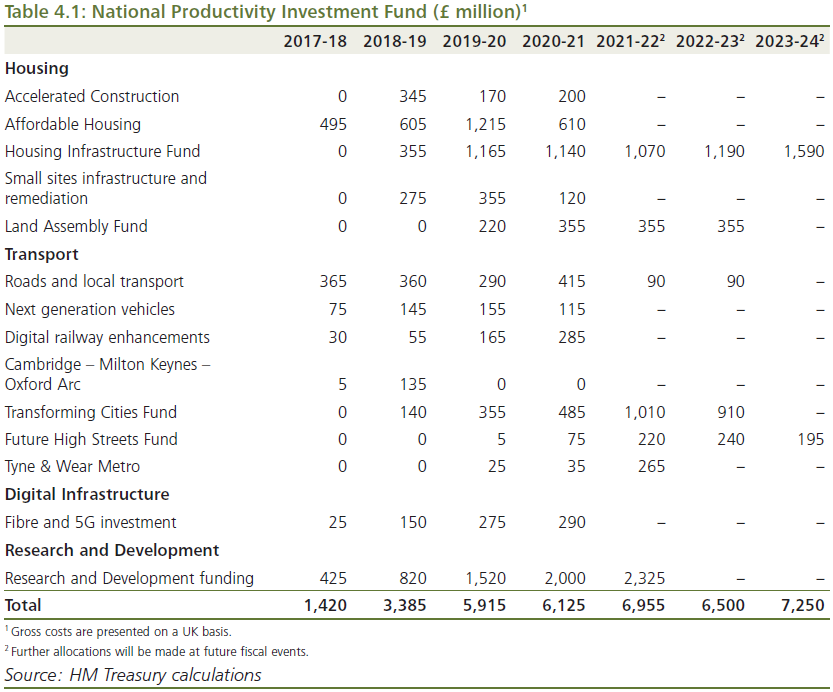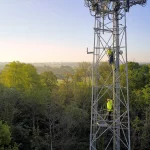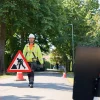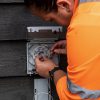Autumn UK Budget 2018 Confirms £200m+ for Rural Full Fibre
The Government’s Chancellor of the Exchequer, Philip Hammond MP, has today set out his autumn 2018 budget and confirmed that he will inject an “additional” £200m+ to help “full fibre” broadband ISP networks reach rural areas. He also set out policy proposals to encourage FTTP for new build homes and existing apartments.
A number of significant policy changes and improvements have occurred since the last budget and thus it’s necessary to highlight these in order to give the proper context for today’s speech. The primary change has been the Government’s commitment to deliver ultrafast Gigabit capable “full fibre” (FTTP/H) broadband ISP connections to 15 million UK premises by 2025 and an aspiration for universal coverage by 2033 (here).
Not long after that they also published the Future Telecoms Infrastructure Review (FTIR), which set out what changes needed to be made in order to facilitate their future “full fibre” and 5G mobile plans. Ofcom immediately followed this up with a related consultation on the necessary regulation changes (here).
Advertisement
The FTIR report suggested that it could be commercially viable for two or more ISPs to invest and deploy FTTP/H networks for the first 80% of UK premises (Ofcom use a more realistic figure of 60%), provided its changes were adopted to encourage investment. After that it noted that the next 10% might be able to support a commercial roll-out, albeit only from one operator, while the final 10% could require up to £5bn of public funding (likely to be match-funded with private investment etc.).
Furthermore the report said that public investment in full fibre for rural areas should begin “simultaneously” with commercial investment in urban locations, but so far there’s only been a comparatively small commitment (c.£200m) and that stems from the existing Broadband Delivery UK (BDUK) scheme.
One thing is thus abundantly clear from all this, significantly more funding for rural areas would be needed to turn the 2033 aspiration into a viable target, particularly since we’re talking about a MASSIVE civil engineering ramp-up (i.e. adding around 2 million additional FTTP premises to the national coverage every year for the next decade or more). At present we’re a long way from that and finding enough skilled engineers is difficult.
Suffice to say, all eyes were fixed on today’s budget to see whether such a huge commitment of additional public funding might be made.
Advertisement
Budget Changes for Broadband and Mobile
In the end we didn’t see billions of new money being put on the table and instead the Government announced that it would invest an “additional” £770m in order to “improve transport infrastructure in cities, and the next steps in the rollout of full fibre broadband nationwide.”
On Sunday it was reported that “at least” £250m of that £770m total could be put toward helping to fibre-up more schools, libraries and other publicly-owned buildings in digitally disadvantaged areas (e.g. remote rural communities), although today’s announcement pegged the figure a little lower.
UK Budget 2018 – Digital infrastructure
Full fibre networks – The government set out its strategy to meet the goal of a nationwide full fibre network by 2033 in the Future Telecoms Infrastructure Review published in July 2018. Full fibre networks are much faster, more reliable, and cheaper to operate than their copper predecessors. The Budget sets out the next steps to accelerate the rollout of full fibre:
• The Budget allocates £200 million from the NPIF to pilot innovative approaches to deploying full fibre internet in rural locations, starting with primary schools, and with a voucher scheme for homes and businesses nearby. The first wave of this will include the Borderlands, Cornwall, and the Welsh Valleys.
• Alongside the Budget, the government is publishing consultations to mandate gigabit‑capable connections to new build homes and speed up the delivery of upgraded connections to tenants, making it quicker and easier for communications providers to roll out full fibre networks.
• The government is also announcing that Suffolk is the first local area to be awarded £5.9 million of funding from the third wave of the Local Full Fibre Networks challenge fund, enabling next-generation full fibre connections to key public buildings.
The proposed approach sounds like an extension of the existing £200m Local Full Fibre Network (LFFN) challenge fund, albeit one with a more specific focus on rural areas. The idea is that once key public sites (“hubs“) have been connected then the network could also be harnessed by ISPs to extend 1Gbps FTTP out to reach local homes and businesses. This in turn would help to make the FTIR ambitions more viable.
Likewise the new consultations (here and here) for helping to mandate gigabit‑capable broadband connections to new build homes had effectively already been announced as part of the earlier FTIR proposals, although we do get a little more detail on the core proposals for this.
Advertisement
Proposals for New Build Homes and Tenants (Both Consultations)
* Amending the Electronic Communications Code to place an obligation on landlords to facilitate the deployment of digital infrastructure when they receive a request from their tenants.
* Enabling communications providers to use magistrates courts to gain entry to properties where a landlord fails to respond to requests for improved or new digital infrastructure.
* Developers and network operators share the cost of connecting new build sites to gigabit-capable networks.
* Introducing a ‘duty to connect’ provision upon network operators.
* Amending Building Regulations Approved Document Part R: (Physical infrastructure for high-speed electronic communications networks). This will mean all new build sites will be built with the necessary infrastructure in place to support gigabit-capable networks.
However we should point out that the official Budget 2018 Document reveals that the Government’s allocation for Fibre and 5G, which comes under their multi-billion National Productivity Investment Fund (NPIF), remains unchanged from the last 2017 budget.

In fairness, it was probably a bit too soon for the Government to set out funding for the 2033 target, particularly since their plans could easily be impacted by whatever Scotland, N.Ireland and Wales end up doing on the deployment side of their own plans to achieve as close to universal coverage of “superfast broadband” (30Mbps+) as possible (here, here and here). Likewise even the 10Mbps+ USO policy may have a small part to play.
Lest we forget the as yet unknown quantity that is the pantomime of Brexit negotiations and future trade deals with the EU.
Conclusions
So far the Government appears to be playing a cautious game by leaving commercial operators to do their own work for a few years (albeit with some limited financial assistance / incentives and policy tweaks), before perhaps stepping in much later to help connect the last bit, much like they did with BDUK.
On the other hand if the Government seriously want to achieve the 2033 goal then they may need to act sooner rather than later, particularly if they truly want rural FTTP/H coverage to keep pace with urban areas (very difficult to do). Alternatively the 2033 aspiration could just be a useful political football, which may remain unfunded so that a different government of the future can have the headache of sorting it all out.
Overall today’s investment boost is a drop in the ocean of what digitally disadvantaged areas (e.g. rural communities) might eventually need. Furthermore it doesn’t change the fact that deploying FTTP out to individual premises remains both hugely time consuming and expensive, although bringing fibre into the community and expanding the availability of vouchers is most welcome (as yet we don’t know exactly how these will differ from the existing Gigabit Voucher Scheme).
We should point out that some operators (e.g. Openreach) have already installed fibre optic cables either close to or all the way into street cabinets or other buildings inside many rural communities. However, as stated above, extending those fibres out into homes is still a huge challenge and if it wasn’t then the operators would have already done it.
Before we go, here’s a brief recap of what the UK Government has already pledged for broadband infrastructure since 2010 (note: between 2010 and 2015 it was a coalition of the Conservatives and Liberal Democrats).
Summary of Previous UK Broadband Developments
* The £1.6bn+ Broadband Delivery UK programme is working to put fixed line “superfast broadband” (24Mbps+) networks within reach of around 98% of premises by the end of 2020 (currently nearly 96%). Openreach (BT) hold most of the contracts but a few AltNets are also involved in the later stages (Gigaclear, Call Flow, Airband etc.). The most recent contracts target a slightly faster speed of 30Mbps+.
* The proposal for a legally-binding Universal Service Obligation (USO) for broadband, which would offer a 10Mbps minimum download speed to all – upon request – from 2020 (1Mbps upload).
* £400m has been provided to a Digital Infrastructure Investment Fund (here), which must be matched by private finance, to help invest in new “full fibre” (FTTP/B) networks over the next 3 years (focused on helping to boost altnet providers). It’s hoped that this could foster FTTH/P capable connections for an extra 2 million premises by 2020.
* £200m has been set aside to support the Local Full Fibre Networks (LFFN) scheme (details, here, here and here), which is funding a programme of local projects to test ways to accelerate market delivery of new “full fibre” broadband networks (e.g. connection vouchers for businesses, aggregated demand schemes, opening access to existing public sector infrastructure).
* 100% business rates relief for new full-fibre infrastructure, backdated for a 5 year period from 1st April 2017, but the advantages of this may be neutralised by the government’s hike in existing rates (here). In order to be truly effective the government may need to extend this but so far they’ve seemed reluctant.
* Providing funding to support a programme of 5G trials and future spectrum release. The first large-scale commercial 5G roll-outs aren’t expected to begin until 2020 but some smaller deployments may start in 2019.
* Various local voucher / subsidy schemes are still on-going to help those areas that suffer slow broadband speeds.
* Ofcom’s Strategic Review has attempted to boost competition by making Openreach more independent from BT and giving rivals greater access to the operators national network of fibre optic cables and cable ducts/poles (here). Not to mention improving the overall quality of service and greater information sharing.
* The Government are also supporting various other broadband related measures through their Digital Economy Act 2017, such as automatic compensation from ISPs for service faults (here), improved / cheaper access to build new infrastructure on private land (here) and more enhancements for consumer switching etc.
* Some £75m has been assigned to help improve broadband connectivity in hard to reach areas via the RDPE’s Rural Broadband Infrastructure Scheme (here).
UPDATE 5:30pm
A couple of comments have come in from the bosses of ISPs Zen Internet and urban provider Community Fibre.
Paul Stobart, CEO of Zen, said:
“Rural connectivity has always been the missing part of the puzzle. For years infrastructure investment has been driven by the need to improve connectivity in big towns and cities, and this investment will go a long way to righting that imbalance.
But the Government can’t stop here if it wants to fulfil its pledge of making access to high-speed broadband a legal right for everyone by 2020. In order for the country to use new technologies to grow and prosper we need to continually invest in the areas that will enable this and broadband is at the top of that list. We certainly hope that this investment is a catalyst for a more digitally harmonious Britain.”
Jeremy Chelot, CEO of Community Fibre, said:
“Given the isolating effect broadband poverty has on individuals and communities across the UK, it is encouraging to see that the Government is taking decisive steps to support the rollout of full-fibre broadband. With a greater number of vital services going online, which all demand a high-speed connection, true full-fibre broadband must be regarded as an essential utility for all parts of the UK.
The Chancellor has thankfully recognised that basic internet access is simply no longer enough. However, as the majority of the connections in the UK are still copper-based, it is evident that the UK is not yet fully prepared for the digital future. Recent OFCOM research has found that the average household is doubling its data consumption every two years, be it watching online video or accessing government services, and so adequate fibre broadband is swiftly becoming vital.
It is therefore not enough to measure success by simple internet connections- the number of true full-fibre connections is the only measure policymakers should be interested in.”
UPDATE 30th October 2018
Some more comments have come in this morning.
Evan Wienburg, CEO of FTTP ISP TrueSpeed, said:
“Full fibre broadband is rightly being recognised as an essential utility and a key driver of regional productivity. Our research shows that almost half (46%) of people think greater access to faster broadband will boost their local area’s economy, helping businesses expand, attracting more talent and fuelling job creation, which is why it ranks as their single most-wanted infrastructure investment.
Delivering full fibre networks worthy of modern day demands requires enormous investment. We’re hoping the Government understands that whatever intervention they choose in the rollout, it does not conflict with private investment already pledged to build full fibre networks and doesn’t discourage further private investment. The announcement should be applauded for backing the rollout of a full-fibre Britain which is so desperately needed.”
Tim Breitmeyer, CLA President (Landowners), said:
“The Chancellor has prioritised connecting the countryside like never before. Digital connectivity is vital to boosting rural economic growth and this funding will go towards projects which should lead to the deployment of full fibre broadband in the hardest to reach areas.
However, although this is very welcome cash for rural broadband, the Government has still missed an opportunity to incorporate 4G mobile connectivity into its plans to improve rural economic growth. Mobile network operators have abandoned the countryside by failing to resolve poor signal and not-spots. Introducing a single rural mobile phone network to deliver better and faster 4G coverage would prove the Government is serious about its ambition to connect the countryside.”
Mark is a professional technology writer, IT consultant and computer engineer from Dorset (England), he also founded ISPreview in 1999 and enjoys analysing the latest telecoms and broadband developments. Find me on X (Twitter), Mastodon, Facebook, BlueSky, Threads.net and Linkedin.
« Update on Superfast Broadband Coverage for Schools in Wales
Which? Identifies the Most Moaned About UK Broadband ISPs »

















































Comments are closed